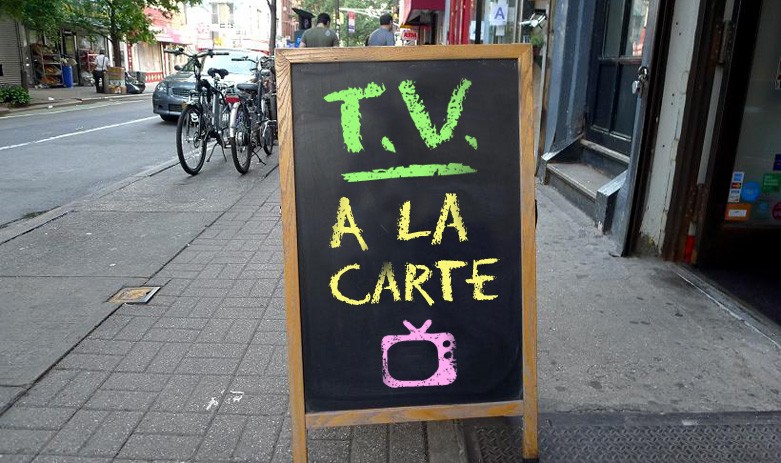
Big Open Pipes
This is the fourth and final post in a series discussing the findings in Free Press’ new report, “Combating the Cable Cabal: How to Fix America’s Broken Video Market.”
In 1992, consumers were giving Congress an earful about their cable bills.
A decade of deregulation meant cable subscribers had to fend for themselves in a monopoly market where cable TV companies abused their pricing power. Congress took up the cause and enacted the 1992 Cable Act, which noted in its findings that the “average monthly cable rate has increased almost three times as much as the Consumer Price Index since rate deregulation.”
The law resulted in lower cable bills, saving consumers $3 billion in just over a year’s time. But this was only a brief respite. Less than three years after a super-majority of Congress voted to rein in monopoly cable prices, an even larger super-majority voted to let the cable industry return to its price-gouging ways.
And return to them it did. Since 1996, cable bills have continued to increase at — yes, you guessed right —nearly three times the rate of inflation.
So why did so many in Congress flip positions in such a short period of time?
The driving force behind this shift was the dawn of the broadband era.
Prior to the Internet age, voice services were delivered via telephone wires and video via cable wires. But broadband Internet brought the possibility of upending this siloed monopoly model.
The telecom and cable industries told Congress they were ready to compete in each other’s markets, something that wasn’t possible before broadband. And Congress felt that so long as the underlying broadband service was a neutral distribution platform, there would be no barrier to new competition in the voice and video markets — and therefore no need to regulate rates.
The plan’s linchpin was cable’s promise to become a telecommunications service provider. The industry said it would create an open and nondiscriminatory broadband telecommunications service capable of delivering high-quality voice, video and data communications.
With members on both sides of the aisle embracing this competitive theory, Congress loosened some of the cable regulations it had adopted less than three years earlier.
But cable didn’t follow through on its promise. The industry instead pressured the FCC to create regulatory loopholes that let broadband-network owners get out of their obligations to keep their networks open.
Congress Was Right: Big Open Pipes Are the Answer
So what can be done to make the video market work more like an actual free market — one where consumers come first and innovation is unshackled from an anachronistic and rigid market structure?
We already have an answer. It’s the same one that prompted Congress to overhaul our nation’s communications laws in 1996, and it’s the same one that’s driving what little disruption we’re currently seeing in the video market.
The answer is big open pipes.
If venture capitalists, in pursuit of a better video-bundling business model, invest in companies that can compete financially alongside the cable companies for content, cable-channel owners will feel more comfortable with stepping away from their cozy partnership with cable providers, and will be more willing to sell their programming to online distributors.
But the amount of investment and innovation needed to disrupt the status quo won’t materialize if there is any uncertainty about the openness of the Internet delivery platform. And right now there’s plenty of uncertainty.
When broadband providers embrace data caps that serve no legitimate engineering or economic function, they’re pushing a business model based on scarcity. When they threaten the open Internet to favor their own legacy video businesses — as Comcast has by excluding some of its own online video offerings against its data cap — they’re telling the market that disruption will not be allowed.
The best way to solve the video market problem is ensuring the Internet is a robust and open platform where network owners are not allowed to discriminate against the content that flows over it. A market with universal access to big open pipes will foster the investment needed to disrupt the video market.
But America doesn’t have an open, robust and affordable broadband market. We’ve got a closed system dominated by the same cable companies that thrive from the old model. There is no wholesale broadband market, and no policies that protect openness or incentivize abundance.
So the first step toward solving our video-market problems is putting broadband back where it belongs: under the portion of the law that ensures these networks will be an open platform for competition.
We also need policies that would correct existing market failures and make the video market work for consumers.
Here’s a start: Arizona Senator John McCain recently introduced legislation that could bring an end to the programmers’ practice of tying their unpopular channels to popular ones. His bill would also provide incentives for cable distributors to offer customers an a la carte option.
Giving consumers a la carte pricing options, which would co-exist alongside traditional bundled packages, would allow people to express their preferences and would shine light on the true prices of channels currently hidden in these bundles. And while channel owners might initially try to set a la carte prices substantially higher than the current per-subscriber wholesale price, that wouldn’t last for very long.
Making prices more transparent and allowing consumers to express their true preferences would reduce the programmers’ ability to sustain inflated prices. With more transparency, programmers would have better incentives to discipline their own costs, like the ridiculous fees the monopoly sports leagues command.
Washington needs to wake up and realize this issue is about much more than video entertainment. By ignoring the problems in the broken video and telecom markets, policymakers are holding back American innovation — to the detriment of all consumers and our nation’s economic growth.